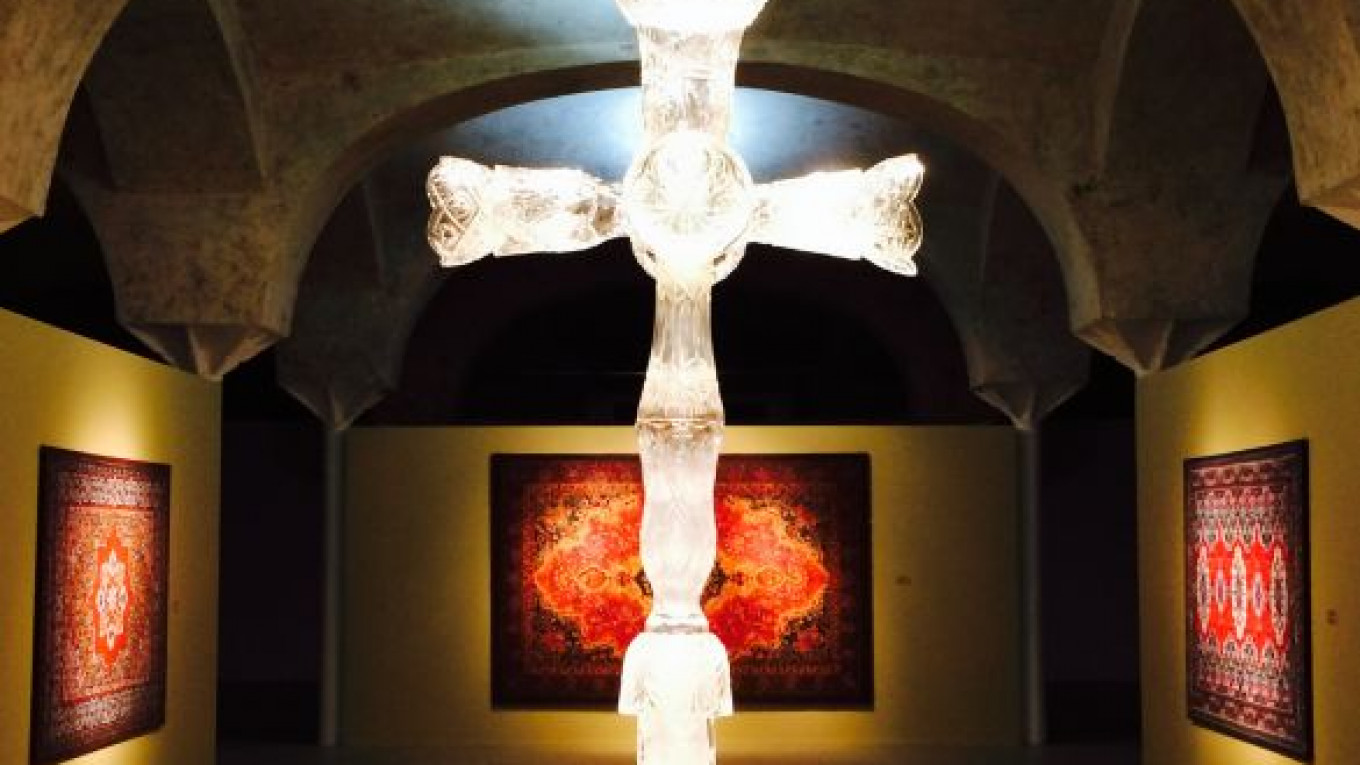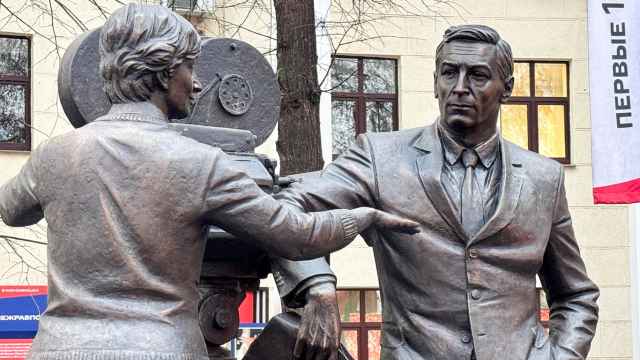Artist Anatoly Gankevich has brought back the wall carpets and kitschy home decor of the Soviet Union in his exhibit "Soviet Mandala," now on display at the Frolov Gallery.
"Two Soviet values — crystal and carpets — have been used as material for recreating two of the most important details of the Soviet world: The center, which is presented by shape and meaning, and the Mandala, which is supposed to be everything that surrounds the center," Gankevich said.
Many foreigners still are surprised by the extensive use of carpets in Russian homes, pondering their use as wall hangings — for Russians who lived in the U.S.S.R, wall carpets were symbols of prosperity and domesticity.
In the 1960s, Soviet families gradually moved into new, high-rise concrete apartment blocks, now known as khrushchyovki, which were poorly constructed, often with drafts and little insulation. Carpets not only served to liven up the cramped and grim apartments, but also served as insulation and helped stop noisy neighbors being heard through the thin walls.
Usually imported from the Central Asian republics, which all have long traditions of carpetmaking, carpets were a luxury, requiring substantial savings and a long wait.
At the exhibit, visitors can see carpets made by Gankevich with oil on canvas designed in the ethnic styles that were in high demand several decades ago.
Gankevich also uses crystal tableware as a bright example of Soviet material values, using crystal pieces to make a cross that symbolizes the worship of luxury.
Soviet carpets were based on ancient weaving traditions in Central Asia.
Anatoly Gankevich was born in Odessa, the Ukrainian Soviet Republic. He started his career collaborating with galleries, directing commercials and films. Now, he concentrates on his own art projects, working in Odessa and Moscow.
Soviet Mandala displays symbols of the "era of stagnation," which was period when underground art first began to appear in the Soviet Union. The direct translation of the Tibetan word "mandala" is "something that surrounds the center."
Paintings, video installations, audio effects and sculpture are combined into one art space that provides the artist's point of view on Soviet domestic life. The 10 canvases modeled after patterned carpets are the focus of the exhibit. They have a composite structure that brings viewers back even farther than the Soviet Union, hearkening to the Byzantine Empire and the rich traditions of carpet weaving in Central Asia and the Caucasus. All the exhibits are made in the original technique of mosaic imitation which has used since the beginning of the 1990s.
The exhibition is arranged in a way that allows every visitor to become a participant by performing a peculiar religious procession around a cross made of a crystal tableware set, with Gankevich aiming at creating a kind of art meditation, constructing his own world of "Soviet Mandala."
"Soviet Mandala" is on display until the Feb. 23 at Frolov Gallery in the Winzavod Center for Contemporary Art, 1 4th Syromyatnichesky Pereulok, Bldg. 6. For more information see http://www.winzavod.ru/
Contact the author at: [email protected]
A Message from The Moscow Times:
Dear readers,
We are facing unprecedented challenges. Russia's Prosecutor General's Office has designated The Moscow Times as an "undesirable" organization, criminalizing our work and putting our staff at risk of prosecution. This follows our earlier unjust labeling as a "foreign agent."
These actions are direct attempts to silence independent journalism in Russia. The authorities claim our work "discredits the decisions of the Russian leadership." We see things differently: we strive to provide accurate, unbiased reporting on Russia.
We, the journalists of The Moscow Times, refuse to be silenced. But to continue our work, we need your help.
Your support, no matter how small, makes a world of difference. If you can, please support us monthly starting from just $2. It's quick to set up, and every contribution makes a significant impact.
By supporting The Moscow Times, you're defending open, independent journalism in the face of repression. Thank you for standing with us.
Remind me later.






